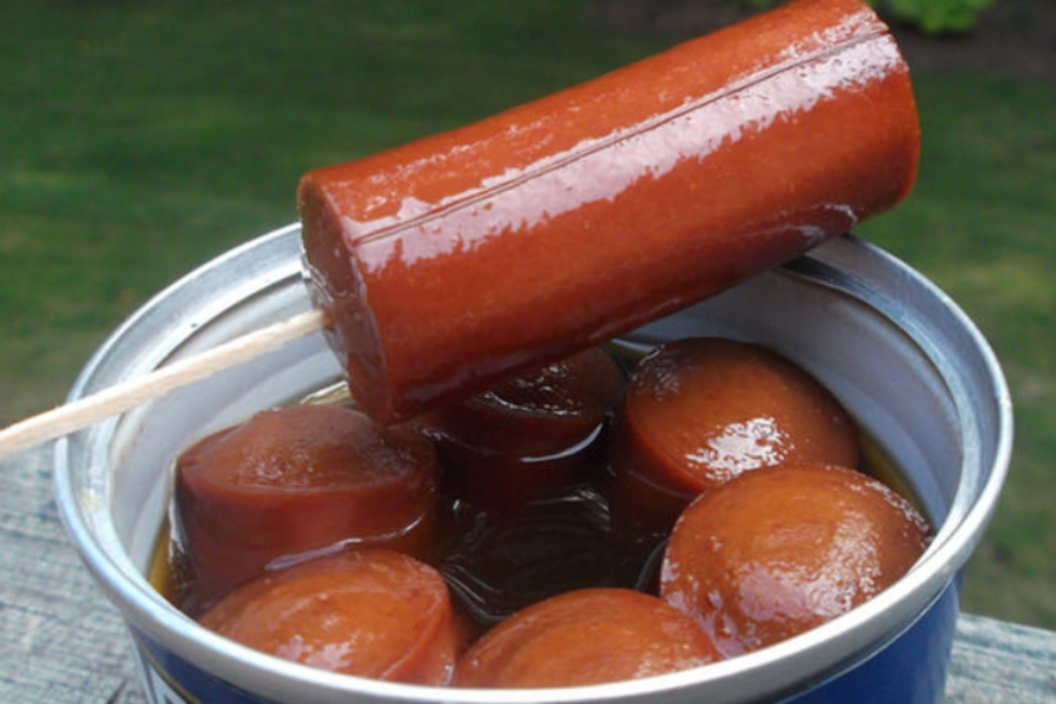Canned meat gets a little bit of a bad rap. It's either something you're fond of in a nostalgic sort of way, or it's something you absolutely refuse to eat. Two of the most well-known types of canned meat are Spam and Vienna sausages, and both have their fans and classic recipes. But what you may not know is that canned sausage happened, like so many innovations, because of war.
In the late 1700s, France was involved in wars in several different locations around the globe. Finding a way to feed French troops in far-off locations meant finding new ways to preserve food. The French government created a competition through the Society for the Encouragement of Industry that offered a 12,000-franc prize for a breakthrough in food preservation.
In 1809, Nicolas Appert, a French chef and inventor, claimed the prize with his process for packing meat in tin cans, which were soldered shut; the process took him almost 15 years to perfect. Part of winning the prize was sharing his process with the public, which he did in 1810 as The Art of Preserving, for Several Years, all Animal and Vegetable Substances.
Vienna Sausages Come to America
Food producers in the United States and Great Britain took notice of the new process and started inventing better cans and assembly lines for different kinds of canned meat. One of those meats was the original Vienna sausage.
In German, the word wiener means Viennese. Wiener is, of course, another name for a frankfurter or hot dog. These little sausages are usually a mixture of ground pork and ground beef, stuffed inside a thin casing and parboiled or smoked.

Several American companies were founded on producing canned meat, including Armour Star and Company and Libby's. You can still find Armour Vienna Sausage and Libby's Vienna Sausage today, made with different flavorings in 4.6 or 10-ounce cans.
What are Vienna sausages made of?
While the canned Vienna sausages do include beef and pork, they also contain mechanically separated chicken, natural flavors, sugar, salt, and sodium nitrite (a preservative). The sausages are canned in chicken broth, which is why when you open the can you'll find a kind of gelatinous liquid. It's these preservatives that give the product packaging its long shelf life.
You can eat the sausages right out of the can, or you can use them in all sorts of recipes. We've rounded up five recipes that show off how Vienna sausages can take you from a snack to an easy weeknight meal.
Pigs in a Blanket
Pigs in a blanket using Vienna sausages are everyone's favorite recipe for a party snack. They're fun and easy to make, too; a great project for the kids to help with.
Get the recipe here.
Mini Corn Dogs
Mini corn dogs are the perfect snack food for any party from game day to a block party to a kids' sleepover. Make sure to fix extra because they'll go fast. Serve them with a variety of condiments; you can stick to ketchup and mustard, but it's also fun to try different flavored barbecue sauces.
Get the recipe here.
Korean Style Sausage Stir Fry
Use the tiny sausages in a quick-cooking stir fry with a sweet and tangy sauce. This meal looks just as good as it tastes, too!
Get the recipe here.
30-Minute Arroz Con Salchicha
Cuban-style yellow rice and Vienna sausages are a classic combo. This version is a faster, one-pot twist on the classic recipe. Try using the chicken Vienna sausages for a different flavor.
Get the recipe here.
Fideo with Vienna Sausage
This Mexican-style pasta dish is fast and inexpensive to make, and because it's pasta and mini hot dogs, your kids are sure to love it.
Get the recipe here.










